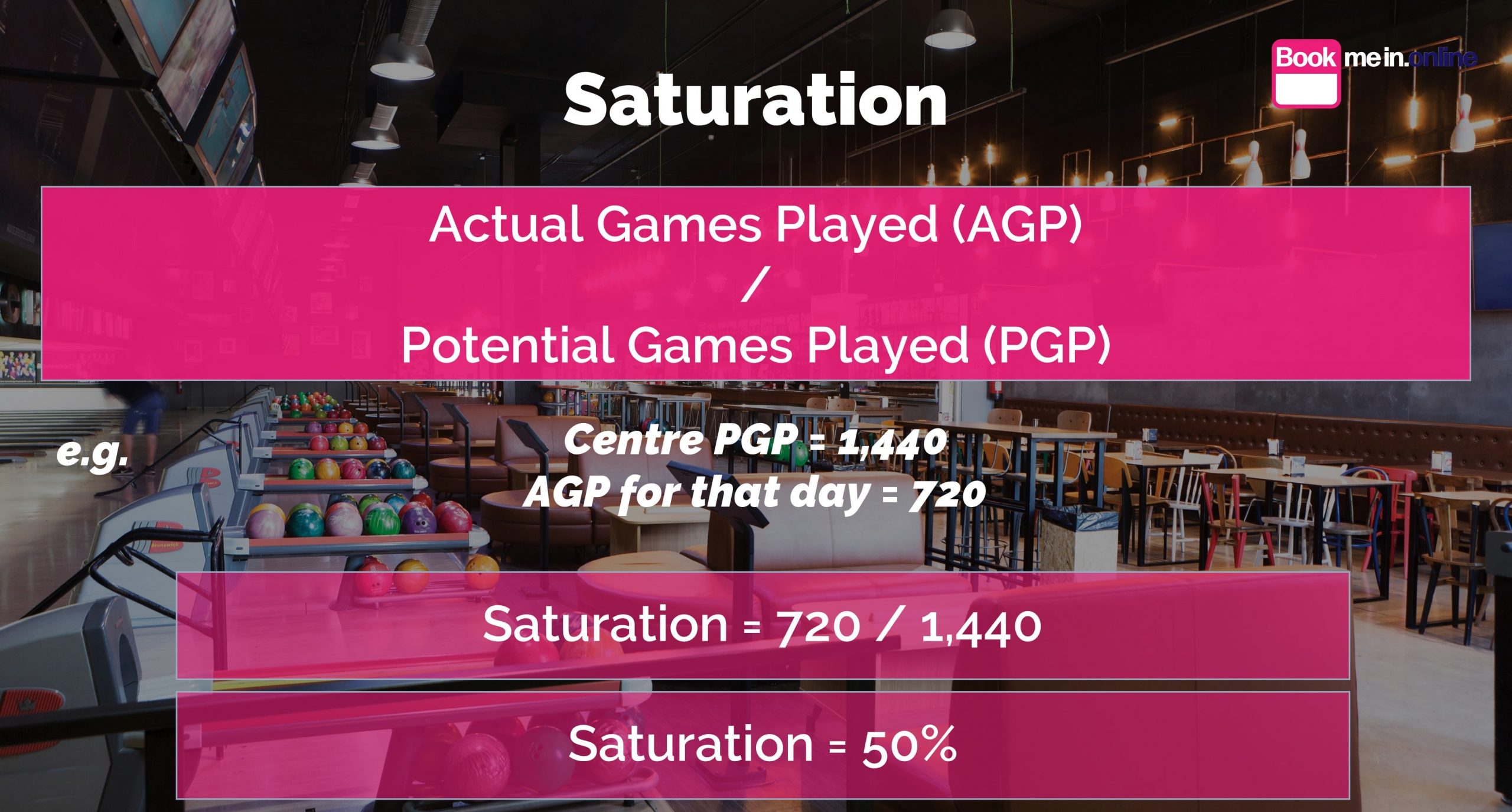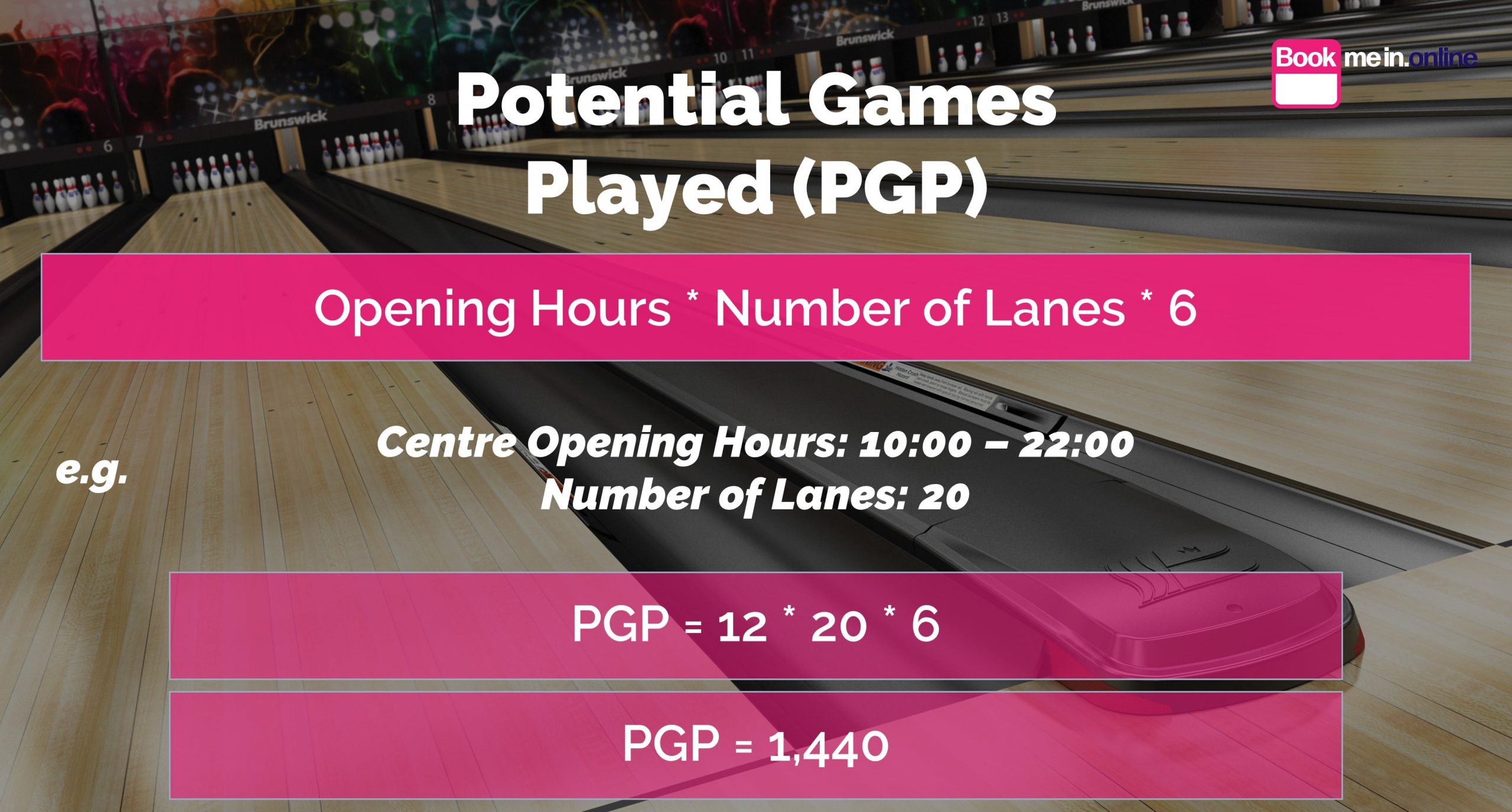
In order to maximise their profitability, Tenpin Bowling owners and operators need to pay close attention to the usage of their most valuable (in revenue generating terms at least) resource – the bowling lanes. As bowling is the primary footfall driver in most centres it is installed in, ensuring the highest possible usage of this resource will result in increased ancillary spend (food, drinks, games machines etc) in addition to the best possible direct bowling revenues. As with anything a manager is seeking to maximise, the key starting point is a usable performance metric. For Tenpin Bowling, the best available metric we have is saturation.
What is saturation?
Quite simply, saturation is a measure of how much of the potential resource (in this case, the bowling lanes) is being used during a particular time period – hour, day, week etc. This measure is expressed as a percentage, with higher percentages demonstrating a greater usage. Saturation is an important performance metric in determining how profitably a Tenpin Bowling centre is operated, and is a more nuanced approach than the traditional ‘lineage.

So, in order to calculate Saturation, we need to first understand how to calculate AGP and PGP.
Calculating PGP
What is a potential game of bowling? Well, every 10 minutes, the average customer, bowling in the average centre, can complete one game of Tenpin Bowling. Obviously some customers will bowl slightly slower, and some slightly quicker. Overall though, this will average out at just under 10 minutes.
We can work out the potential games of bowling that can be played (PGP) each day like so:

For the week, assuming the same opening hours are valid each day, we would simply multiply this number by 7. If there are different opening hours in use, just add all the days together.
Calculating AGP
This is much easier to work out. Your scoring or Centre Management System should be tracking the number of games played per day. As we know, these equate to one sector, or ten minutes of time.
Therefore, we can simply run a report to see how many games have been played in that time period.
How does this help me make more money?
If the centre operator understands the current saturation levels of their Tenpin Bowling resource, then they can begin to analyse two things.
- Period where there is potential to increase the saturation.
- The affect of actions they take (price changes, marketing activities etc) on saturation.
Bowling centres often have queues at peak times, and if you ask the staff how they’re day was, they will talk about how busy it was. The problem is often that the queue is only for 2 or 3 hours a day, and the rest of the time the centre is relatively quiet. Of course, this doesn’t just create a problem for bowling, it leads to long wait times at the reception, food servery and bars.
Often, receptionists like to leave a ‘buffer’ of one game (or ten minutes) after each booking. They will tell you this is to protect against overrun, but really this is to make their life easier. In fact, what they are doing is giving up nearly 17% of the potential revenue of the centre, and risking turning away thousands of customers each year.

Increasing saturation
Obviously there is a maximum saturation that can be achieved at a particular time – if all the lanes are in use then, at that point, you have 100% saturation. The problem is, at that point, no more customers can play. This leads to a wait time, and an unnaceptable wait time inevitably leads to some customers choosing not to play, and going somewhere else instead.
The key thing of course, is to make sure the saturation is as high as possible throughout the entire trading period, but to never have an unacceptable wait period so the smallest number of customers possible choose not to play.
What will happen if I increase saturation?
On the most basic level, as we saw earlier, more customers equals more money – so, increasing Saturation should lead to increasing income. In most cases this will be true, however, it is obvious that some of the measures above (e.g. discounting at less busy times) will lead to a reduction in Spend per Game.
Generally though, we would expect even small increases in Saturation to give rise to incremental revenue growth following a clear pattern.
Increasing saturation in your centre
A effective, rules based online booking system will automatically tactically manage the resources that are available and the products offered to the customer, while greatly simplifying the job of the receptionist to speed up the booking in process. As the staff see how the online system is approaching lane allocation, and products sold, they will naturally start to fall in line with the strategy, providing this is reinforced with clear, effective training.